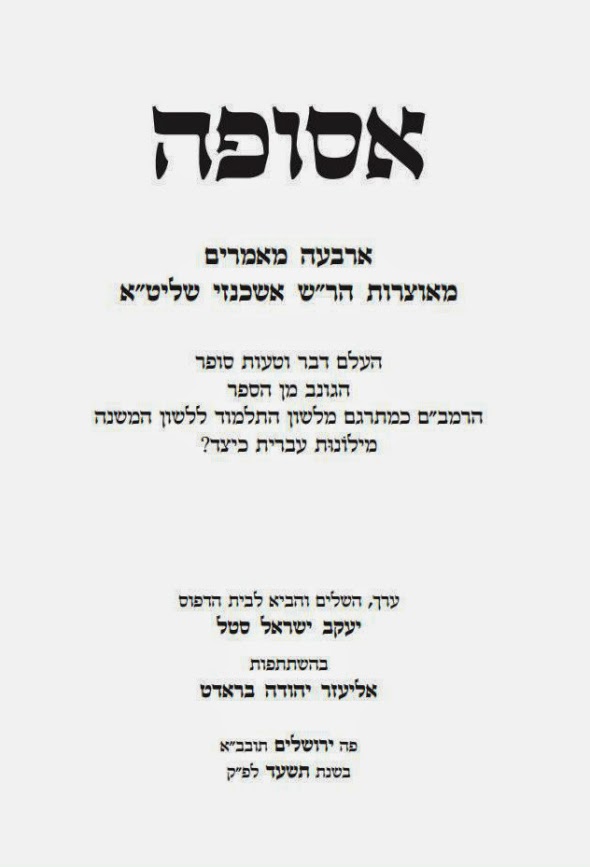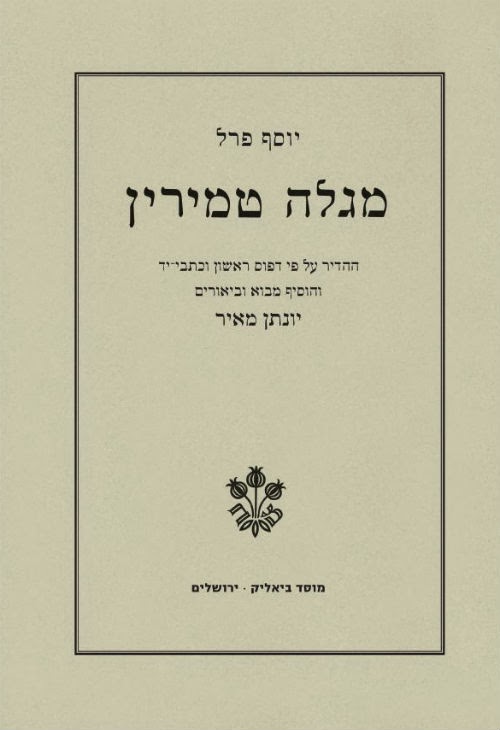Book Excerpt: Turning Judaism Outward by Chaim Miller
Some truly fascinating insights into Menachem Mendel’s inner life have surfaced recently in his correspondence with Rayatz, first published in 2010.73 The Sixth and future Seventh Rebbes were in very close contact during this period; between 1929 until 1932 alone, Rayatz penned some seventy-two letters to his son-in-law and daughter.
In contrast to Reb Levik’s letters, which were almost exclusively devoted to Torah thoughts, Rayatz’s communications were extremely personal. We get a strong sense of what a thoughtful and caring man he was, and how much his relationship with his new son-in-law meant to him. The few letters of reply from Menachem Mendel that have been published are also extremely revelatory—a glimpse of the future Rebbe’s self-perception, his concerns, and his spiritual leanings.
Material like this is extremely rare. In his fifty years of public work, the Seventh Rebbe seldom spoke or wrote about himself.
From the correspondence, we see how important it was for Rayatz to be intimately connected with the personal lives of his family. The Sixth Rebbe chronicles his travels and experiences in detail, along with their emotional ups and downs. He expects Menachem Mendel to reciprocate and is disappointed when requests to his son-in-law to share his life experiences are not forthcoming. Menachem Mendel, by his own confession, lived in the world of thought, and the little details of everyday life were not important to him. “The reason I have not written,” he writes in the winter of 1930, “which I am sure without my letter you could fathom for yourself, is that it is difficult for me to find interesting events in my life to tell you. Just to fill a piece of paper with incidental details, to write a letter for the sake of writing a letter—why should I steal your time for that?”74
Rayatz is persistent. “I want to clarify,” he writes back, “that when you will contemplate the truth as it is, what a deeply personal relationship ought to exist between us, you will always find something interesting that will extend beyond one page.”75
But Menachem Mendel’s world is the world of ideas, not of events and feelings. In his next letter, which represents a fascinating insight into the Seventh Rebbe’s self-image, he attempts to clarify the matter.
“The reason why I have not written is due to the lack of interesting events to report. There are people for whom the central, overwhelming focus of their lives is in the world of thought, the world of ideas, and their main activities—activity being the sign of life—are focused inwards, to the ‘world set in their hearts’ (Ecc. 3:11), and not to the outside world surrounding them.
After this introduction, I must say that, while I do not consider it to be a particular virtue, it seems that—whether as a result of my natural disposition or outside influences—I am such a person. For as long as I can remember, there has been a paucity of interesting events in my life, things that I found personally engaging.”76
This, however, does not stop Rayatz from showering forth his emotions on paper: love and affection, repeated blessings for children and happy marriage, as well as his frustrations. In a letter penned after the festival of Shavuot, 1930, Rayatz wishes his son-in-law that “you and your wife, my precious daughter, should have a pleasurable life, with love and affection.”77 In a letter to Moussia on her twenty-ninth birthday, Rayatz writes, “My precious daughter! For everything in this world there is a limit and end, but the deep love of parents has no limit,” and he blesses her to have “fine, healthy, bright children.” 78
In a letter to Menachem Mendel the following year, Rayatz’s affections continue to gush forth, “If my thoughts about you went straight onto paper, I mean if thoughts themselves could write, without the need of an actual hand, I would already have heaps of letters.” 79 In another letter Rayatz signs off, “I am your father-in-law… who loves you at every moment.” 80
Sometimes we find Rayatz expressing his distress. In the spring of 1930, Rayatz writes of his “deep, great pain… that you did not merit to see the face of the ‘Holy of Holies’ [Rashab], his face literally shining with G-dly light, the Divine presence resting on him… nor to see the Chasidim in Lubavitch, their prayer and worship…. What an awful shame (chaval chaval) that you did not see all this.” 81
To Moussia he shares mixed emotions of visiting the Western Wall in Jerusalem, “I cried earnestly over the fall of our Lubavitch. I kissed the stones of the Western Wall with a bittersweet pleasure.” 82
More than once, Rayatz expresses his concerns at the thought of his religious son-in-law walking the streets in what was becoming an increasingly dangerous city for Jews, “I am always thinking about how you walk in the city, whether you are taking the necessary precautions.” 83
Rayatz also showed, on one occasion, a fondness for allegory and riddle which did not seem to engage Menachem Mendel. In a letter from the summer of 1929, Rayatz concludes, in a postscript, “Contemplate well the fine pearl which G-d has given you for many long, good years, physically and spiritually.” 84 Receiving no response, he repeats the following winter, “Regarding the fine gift, the precious pearl, do you still not understand what I mean? Or did you already fathom my riddle?” 85
Menachem Mendel’s reply is brief: “Regarding the ‘fine pearl,’ I still do not understand to what this refers.” 86
Rayatz has no choice other than to decipher his own riddle: “The fine pearl which G-d has given you, is my daughter, your honorable wife. (That was what I implied in my letter, but you did not discern what I intimated).” 87
Rayatz also takes much interest in his new son-in-law’s daily routine. “Write to me in detail your daily schedule,” he requests. 88 On another occasion, “I would like to know what you are learning, which tractate? What are you learning in Chasidut? How much time per day, i.e., in each twenty-four hours? Do you have any fixed study times? What are they?” 89 In a 1932 letter Menachem Mendel reports that he is currently learning tractate Bava Batra, but that “regarding a fixed daily schedule, since coming from Russia, I still have not managed this.” He also confesses to having challenges in his learning, “because of mental exhaustion, or from feeling distracted.” 90
Of particular interest are the future Rebbe’s spiritual leanings. In a typically unassuming fashion, Menachem Mendel expresses his yearnings for an arousal to teshuvah (return to G-d). The month of Elul is coming imminently, which is the month of preparation [for the High Holidays] and teshuvah. What, then, is the way, and what is the advisable method, that will affect me, so that I can ultimately have a heartfelt sense of yirat Shamayim [fear of Heaven]—tangibly in the here and now, so that I actually feel the change?91
suggestion from Your Holiness—if a request is necessary and if it will help. I am strengthened by the hope that from time to time you will honor and delight me with letters like this. I lack a lot of knowledge about the background of Chasidut and its history…. and so with every fact that I gain in this area, I rejoice “as if finding a great prize” (Ps. 119:162).97
received it, in the Chabad journal Hatamim (vol. 2, pp. 150-159). It appears in English translation in Shimon Neubort (trans.), Branches of the Chassidic Menorah vol. 1 (New York: Sichot in English, 1998), pp. 137-162.

